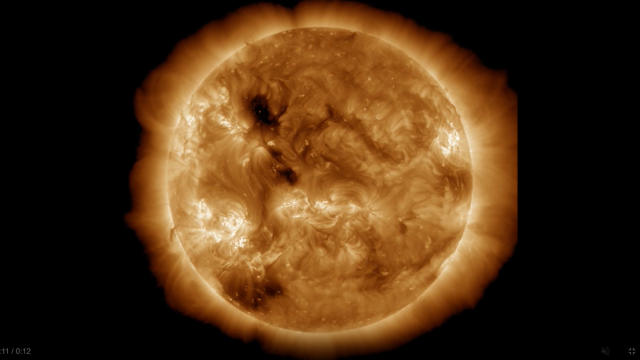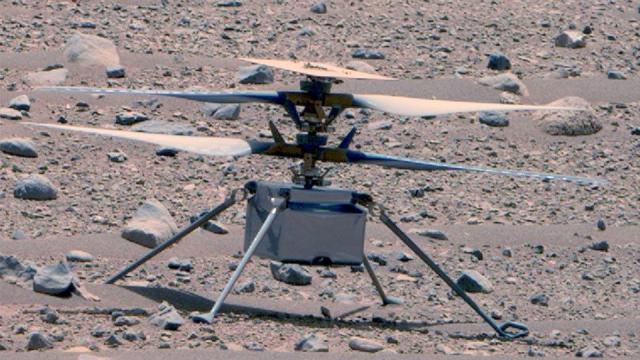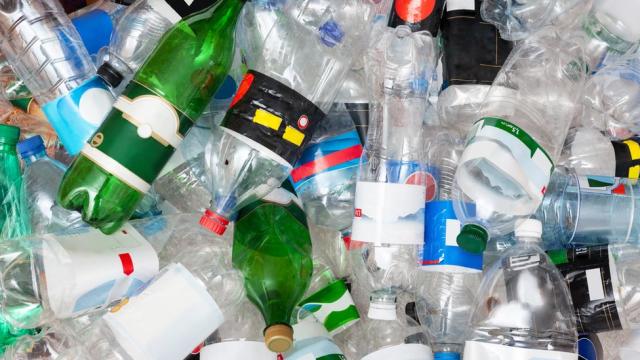Science Daily News | 04 Jul 2023

Views (120)

Ingenuity helicopter phones home from Mars after 63-day silence
The Mars Ingenuity helicopter has reestablished contact with NASA after a 63-day silence that began shortly before its 52nd flight ended in April.

After 63 days of silence, the Mars Ingenuity helicopter is talking again.
The little chopper took to the Martian skies on April 26 for its 52nd flight but lost contact with mission controllers before landing — creating a monthslong communications blackout.
The flight was intended to reposition the helicopter and capture images of the Martian surface.
The mission team anticipated that radio silence might occur.
That’s because Ingenuity communicates with mission control at NASA’s Jet Propulsion Laboratory in Pasadena, California, by relaying all messages through the Perseverance rover.
And when Ingenuity took off for flight 52, a hill presented an obstacle blocking the helicopter and rover from communicating with each other.
“The portion of Jezero Crater the rover and helicopter are currently exploring has a lot of rugged terrain, which makes communications dropouts more likely,” said Josh Anderson, the Ingenuity team lead at JPL, in a statement.
While the two robots make for a dynamic duo that can investigate Mars from the surface and its atmosphere in search of signs of ancient life, it’s difficult for them to stick close together.
Ingenuity began as a technology demonstration to test if a small rotorcraft could fly on Mars. After surpassing all expectations across five successful flights in the spring of 2021, Ingenuity transitioned to become an aerial scout, flying ahead of the Perseverance rover and plotting out safe and scientifically interesting pathways for the rover’s exploration.
Sometimes, Ingenuity is off exploring and taking images of sites that the rover may not reach for weeks.
Once Perseverance crested the obstructive hill, the helicopter and rover had a chance to communicate and relay Ingenuity’s messages back to Earth — including the data captured during its 139-second-long flight spanning 1,191 feet (363 meters) on April 26.
“The team’s goal is to keep Ingenuity ahead of Perseverance, which occasionally involves temporarily pushing beyond communication limits,” Anderson said.“We’re excited to be back in communications range with Ingenuity and receive confirmation of Flight 52.”
Hoping that the rest of Ingenuity’s system will appear to be in good shape, flight engineers are already planning another aerial excursion for the chopper in another couple weeks. Ingenuity’s next few flights will bring it closer to a rocky outcrop that NASA is keen for Perseverance to explore.
Ferocious black holes reveal 'time dilation' in early universe
Time is a slippery thing, as profound thinkers like physicist Albert Einstein and, well, fictional time traveler Dr. Who plainly understood. Scientists made that point anew on Monday in a study that used observations of a ferocious class of black holes called quasars to demonstrate "time dilation" in the early universe, showing how time then passed only about a fifth as quickly as it does today. The observations stretch back to about 12.3 billion years ago, when the universe was roughly a tenth its present age.

By Will Dunham
WASHINGTON (Reuters) - Time is a slippery thing, as profound thinkers like physicist Albert Einstein and, well, fictional time traveler Dr. Who plainly understood. The latter, in a 2007 episode of the British sci-fi series, accurately described time as "wibbly wobbly."
Scientists made that point anew on Monday in a study that used observations of a ferocious class of black holes called quasars to demonstrate "time dilation" in the early universe, showing how time then passed only about a fifth as quickly as it does today. The observations stretch back to about 12.3 billion years ago, when the universe was roughly a tenth its present age.
Quasars - among the brightest objects in the universe - were used as a "clock" in the study to measure time in the deep past. Quasars are tremendously active supermassive black holes millions to billions of times more massive than our sun, usually residing at centers of galaxies. They devour matter drawn to them by their immense gravitational pull and unleash torrents of radiation including jets of high-energy particles, while a glowing disk of matter spins around them.
The researchers used observations involving the brightness of 190 quasars across the universe dating to about 1.5 billion years after the Big Bang event that gave rise to the cosmos. They compared the brightness of these quasars at various wavelengths to that of quasars existing today, finding that certain fluctuations that occur in a particular amount of time today did so five times more slowly in the most ancient quasars.
Einstein, in his general theory of relativity, showed that time and space are intertwined and that the universe has been expanding outward in all directions since the Big Bang.
Astrophysicist Geraint Lewis of the University of Sydney in Australia, lead author of the study published in the journal Nature Astronomy, said this continual expansion explains how time flowed more slowly earlier in the universe's history relative to today.
It is not as if everything was in slow motion. If you could be transported back to that time, a second would still feel like a second to you. But from the perspective of a person today, a second back then would unfold in five seconds now.
"In modern physics, time is a complicated thing," Lewis said. "Dr. Who had it right, that time is best described as 'wibbly-wobbly, timey-wimey stuff.' This means that we don't really understand time and its limitation, and some things are still not ruled out: time travel, warp drives, etc. The future could be very exciting, though maybe not."
By looking at faraway objects, scientists peer back in time because of how long it takes for light to travel through space.
Scientists previously documented time dilation dating to roughly 7 billion years ago, based on observations of stellar explosions called supernovas. Already knowing the time it takes for today's supernovas to brighten and fade, they studied these explosions in the past - those at great distances from Earth - and found that these events unfolded more slowly then from our time perspective.
The explosion of individual stars cannot be seen beyond a certain distance away, limiting their use in studying the early universe. Quasars are so bright that they can be observed back to the universe's infant stages.
"What is observed over time is the quasar brightness. This fluctuates up and down, the result of lots of complicated physics in the disk of matter spinning around a black hole at almost light speed. This change in brightness is not simply a bright, fade, bright, fade. It looks more like the stock market, with small scale jitters on longer-term changes, with some sharp fluctuations," Lewis said.
"The statistical properties of the light variations contain a time scale - a typical time for the fluctuations to possess a particular statistical property. And it is this we use to set the ticking of each quasar," Lewis added.
(Reporting by Will Dunham, Editing by Rosalba O'Brien)
The AI trained to recognise waste for recycling
Video cameras powered by AI are analysing work at waste processing and recycling facilities.

There is a lot of rubbish in the world.
Someone who will not find those statistics surprising is Mikela Druckman. She has spent a lot of time looking at what we throw away, as the founder of Greyparrot, a UK start-up that has created an AI system designed to analyse waste processing and recycling facilities.
"In a single day you will have literally mountains of waste in one facility coming through, and what's very shocking and surprising is that it never stops," she says. There are no holidays for waste, it just keeps coming."
Greyparrot places cameras above the conveyor belts of around 50 waste and recycling sites in Europe, utilising AI software to analyse what passes through in real-time.
AI technology has come on in leaps and bounds over the past year, and its ability to process images is now very sophisticated. However, Ms Druckman says it was still hard to train a system to recognise rubbish.
"A product like a Coke bottle, once it goes into the bin, will be crumpled, crushed and dirty, and makes the problem much more complex from an AI standpoint."
Greyparrot's systems now track 32 billion waste objects per year, and the firm has built up a huge digital map of waste. This information can be used by waste managers to become more operationally efficient, but it can also be shared more widely.
"It is allowing regulators to have a much better understanding of what's happening with the material, what materials are problematic, and it is also influencing packaging design," says Ms Druckman.
"We talk about climate change and waste management as separate things, but actually they are interlinked because most of the reasons why we are using resources is because we're not actually recovering them.
"If we had stricter rules that change the way we consume, and how we design packaging, that has a very big impact on the value chain and how we are using resource."
She hopes that big brands and other producers will start using data generated by firms like GreyParrot, and ultimately design more reusable products.
Troy Swope runs a company that is intent on making better packaging. Footprint has worked with supermarkets, and with Gillette to convert its plastic razor trays to ones made of plant-based fibre.
He referenced a plastic salad container that was labelled "ready to recycle" and asked what that actually meant.
"It's less likely than ever that their discarded single-use plastic ends up anywhere but a landfill," wrote Mr Swope. "The only way out of the plastics crisis is to stop depending on it in the first place."
So-called greenwashing is a big problem, says Ms Druckman. "We've seen a lot of claims about eco or green packaging, but sometimes they are not backed up with real fact, and can be very confusing for the consumer."
To help retailers know that used plastic bottles are in fact being recycled, and in what numbers, UK-firm Polytag covers them with an ultraviolet (UV) tag that is not visible to the human eye.
When the bottles then arrive at the determined recycling plants, the tags are read by a Polytag machine. The number of bottles is then uploaded to a cloud-based app in real time, which Polytag's customers can access.
"They can see exactly how many bottles are being recycled, which is something these brands never had access to before," says Polytag's project manager Rosa Knox-Bradley.
So far the firm has worked with UK retailers Co-Op and Ocado.
This is due to see "reverse vending machines" located in shops and other public areas, where people will be able to deposit used plastic bottles and metal drinks cans, and be paid money for doing so - around 20p per item.
The search to find a planet-friendly way to get rid of rubbish remains a tough race, however, as seemingly every year a new trend comes along to throw a spanner in the works.
The latest is an addiction to e-cigarettes, or vapes, which are creating a whole new mountain of electronic waste that is hard to recycle.
"It's a huge problem. And it's getting bigger," said Ray Parmenter, head of policy and technical at the Chartered Institute of Waste Management.
He adds that the "fundamental issue" is disposable single-use vapes, which he says "are basically an anathema to the circular economy".
Disposal vapes are composed of many materials - plastics, metals, a lithium battery and some even have LED lights or microprocessors.
"The way we get these critical raw materials like lithium is from deep mines - not the easiest places to get to. So once we've got it out, we need to make the most of it," says Mr Parmenter.
Vapes are a good example of how we need to change thinking, says Ms Druckman.
"It doesn't make economic sense, it doesn't make any sense. Rather than ask how do we recycle them, ask why we have single-use vapes in the first place?"
While industry and policy-makers have big roles to play in making products more recyclable or reusable, so do consumers, she adds. And the biggest change they can make is to "consume less".
Seal at risk from plastic neck ring, says experts
Experts are appealing for people to report sightings of the seal so it can be helped.

Marine wildlife teams are hoping to help a seal with what is believed to be a plastic throwing ring around its neck.
The seal has been spotted a number of times in St Ives Harbour in Cornwall.
It is asking people to report any sightings of the seal to the organisation.
Dan Jarvis from BDMLR said the seal had been spotted close to the beach at St Ives Harbour.
He said the ring was "gradually going to wear its way through the skin and cause an injury which could be open to infection and that could cause debilitation to her as well".
"Looking at the pictures I've seen this morning, it's pretty firmly around her neck," he said.
He said if there was "an opportunity" for BDMLR to help her that would be the "best outcome".
The ring would also adversely affect the seal's ability to dive, he said.
"Because they're such inquisitive creatures, they're often getting caught up in various bits of debris in the water," he said.
"We've had quite a few calls this year to animals that are entangled.
"I think off the top my head we've had about a dozen or so that we've dealt with and that's just around Cornwall, and nationally of course, there'll be a lot more than that."
Buck Moon: July supermoon to appear brighter than usual in the sky this week
July's full Moon, known as a Buck Moon, will be closer than normal in its orbit around the Earth.

The Moon will have us gazing at the sky on Monday evening as it appears brighter and larger than usual.
July's supermoon will appear full for up to three days, according to Nasa.
Known as a Buck Moon, it will be closer than normal in its orbit around the Earth.
This is because the Moon's orbit is not a perfect circle due to the Earth's gravitational pull; instead it is elliptical, like an elongated circle or oval.
Because of this, there are times in the Moon's 27.32-day orbit when it is closer to the Earth and other times when it is further away.
A supermoon happens when the Moon is at the closest point to Earth in its orbit and also in its full moon phase.
The full Moon in July was given the Native American name of Buck Moon because the antlers of male deer are in full growth mode in July, according to the Royal Observatory. Bucks shed and regrow their antlers.
The Moon reached peak illumination at 12:39 BST (07:39 Eastern Time) on Monday, according to the Old Farmer's Almanac.
The Almanac, which has published astronomical data for centuries, said the Buck Moon will orbit closer to the Earth than full Moons we have already had this year.
August's full Moon will be the only supermoon closer to the Earth this year, the publication said.
In the UK, the best time to see the supermoon event will be earlier in the night across England, Wales, southern Scotland and Northern Ireland, according to BBC Weather Presenter Stav Danaos.
As the night progresses, visibility may lessen as clouds and rain fill the skies for much of central Scotland, he adds. After midnight, an area of cloud and rain will spread across southern parts of the UK too.
Here are some pictures of the Buck Moon from around the world on Sunday and Monday:
All images subject to copyright
Sun breaks out with record number of sunspots, sparking solar storm concerns
The sun has produced 163 sunspots in June, the highest monthly number in more than two decades, sparking concerns that Earth may soon face space weather trouble.

The sun produced over 160 sunspots in June, the highest monthly number in more than two decades.
See more
As the otherwise thin gas in this region interacts with the solar wind, the atmosphere swells up, causing satellites to suddenly face much more drag, or resistance, than they do in calm space weather.
"In the largest storms, the errors in the orbital trajectories become so large that, essentially, the catalog of orbital objects is invalidated," Berger told Space.com. "The objects can be tens of kilometers away from the positions last located by radar. They are essentially lost, and the only solution is to find them again with radar."
Related stories:
"Since Cycle 25 is odd, we might expect the most effective events to happen after the maximum, in 2025 and 2026," Leamon said. "This is because how the poles of the sun flip every 11 years. You want the pole of the sun in the same orientation compared to the poles of Earth so that then causes the most damage and the best coupling from the solar wind through Earth's magnetic field."
0 Likes
